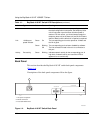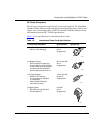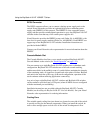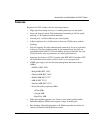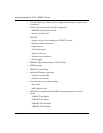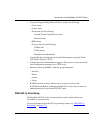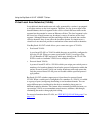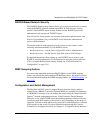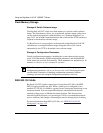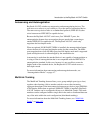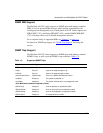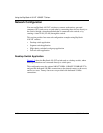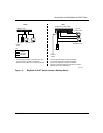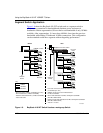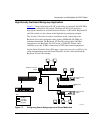
Using the BayStack 410-24T 10BASE-T Switch
1-14
309985-A Rev 00
Flash Memory Storage
Storage of Switch Software Image
The BayStack 410-24T switch uses flash memory to store the switch software
image. The flash memory allows you to update the software image with a newer
version without changing the switch hardware (see “Software Download” on
page 3-85). An in-band connection between the switch and the TFTP load host is
required to download the software image.
If a BootP server is set up properly on the network and the BayStack 410-24T
switch detects a corrupted software image during the self-test, the switch
automatically uses TFTP to download a new software image.
Storage of Configuration Parameters
Certain configuration parameters, including the system characteristics strings,
some VLAN parameters, IGMP configuration parameters, and the MultiLink
Trunk names are stored in flash memory. These parameters are updated every 10
minutes or whenever a reset command is executed.
IEEE 802.1Q VLANs
BayStack 410-24T switches support up to 64 port-based VLANs with IEEE
802.1Q tagging available per port. When a switch port is configured to be a
member of a VLAN, it is added to a group of ports (workgroup) that belong to one
broadcast domain. You can assign different ports (and therefore the devices
attached to these ports) to different broadcast domains. This feature allows
network flexibility because you can reassign VLANs to accommodate network
moves, additions, and changes, eliminating the need to change physical cabling.
For more information about 802.1Q VLANs, see “
IEEE 802.1Q VLAN
Workgroups” on page 1-32.
Note:
Do not power off the switch within ten minutes of changing any
configuration parameters, unless you first reset the switch. Powering down the
switch within 10 minutes of changing configuration parameters (without
resetting) can cause the changed configuration parameters to be lost.



